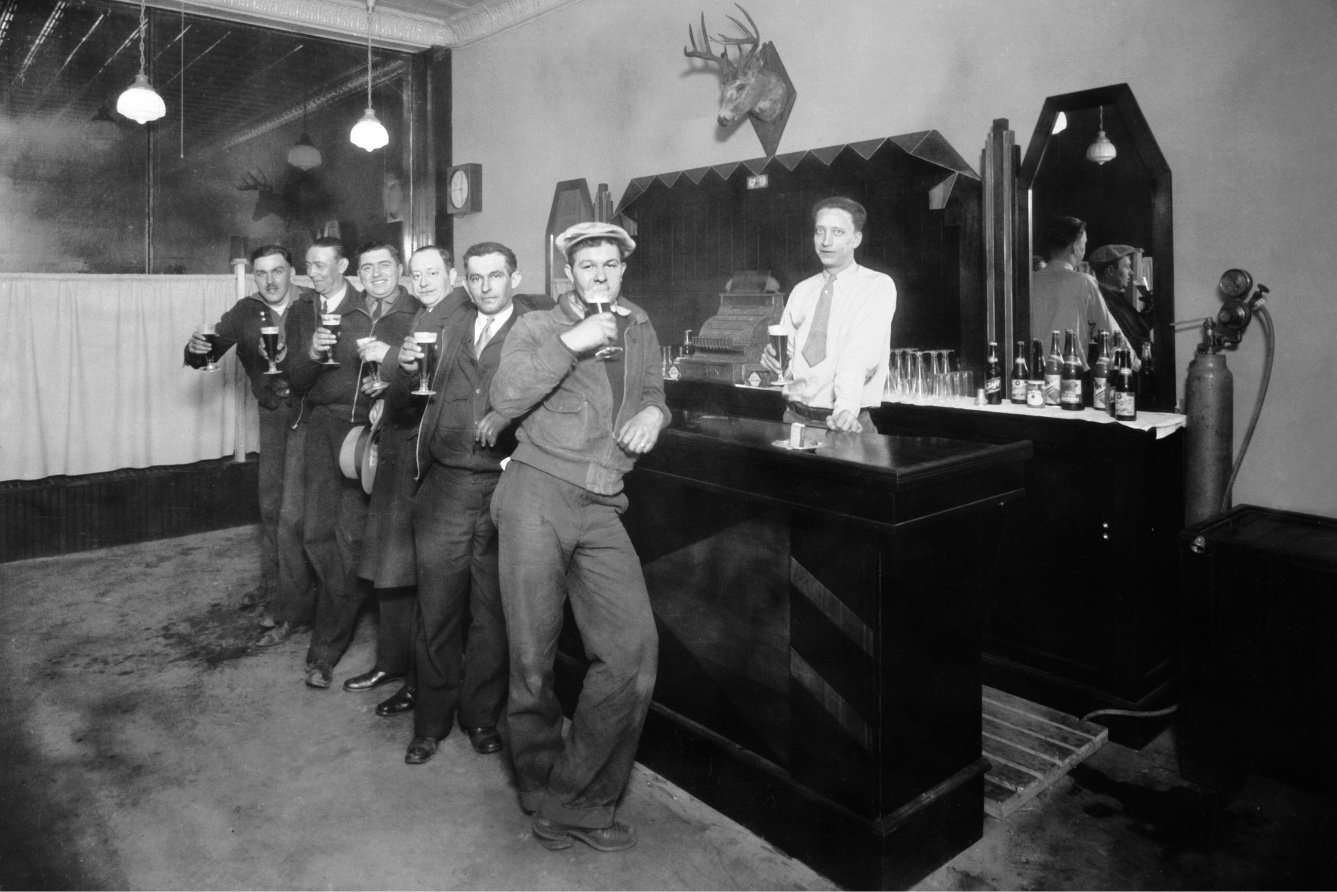Lessons from a Coffee Shop in Rural Nevada
Now Serving Espresso? The typical patrons that enjoyed a cool beverage in Yerington in the 1880’s.
I’m just going to own it: as a White, straight, middle-aged, middle-class woman it’s rare for me to have a strong sense of not fitting in any more. I’m no longer finding myself in the kind of “old boys’ club” where older men have always set the norms and never imagined a younger woman like me attempting to join them. Don’t get me wrong — they still exist, but I’m no longer in a phase of my career where I have to navigate them much.
So when I found myself unexpectedly outside the norms of a coffee shop in my parents’ hometown of Yerington, Nevada (population 3,163) it startled me. And thinking about it later, it’s a great allegory for a historically White organization trying to implement its Diversity, Equity & Inclusion (DEI) plans.
It’s a great allegory
for a historically White organization trying to implement its Diversity, Equity & Inclusion (DEI) plans.
My parents moved to Yerington after retirement in search of something quieter and less expensive than our California home, so I wasn’t familiar with its social norms. Once when I was visiting, I noticed a banner on a café that announced “Now Serving Espresso Drinks!” I went in and saw that the place still had its ornate bar, no doubt built in the 1880’s to serve liquor to cowboys and miners. To this nostalgic decor had been added a shiny, high-tech espresso machine. The barista — also the bartender for a handful of locals nursing their beers — understood the basics of the machine but had to look up a recipe for my order, a tall, half-caf iced Americano.
At this, the locals began jeering loudly at me and the server, “What? I wouldn’t serve her.” “That’s what iced tea is for! Iced coffee - I never heard of such a thing.” “Half-caf? Make up your mind!” They didn’t say “That’s not how we do it here.” They didn’t have to.
Normative ways of being -
We see them and know our tribe.
In my urban hometown of Minneapolis my order would have been within the norm at any place with an espresso bar. And enacting the norms would make me feel at home, even at a café where I was a newcomer. That’s part of the reason humans generate normative ways of being. We see them and know our tribe.
When I walked into that Yerington café, the norms were not visible to me. They never are. Even the regular customers didn’t have them written down anywhere. Remember, norms by their nature are unspoken rules. The sign that referenced espresso drinks was clearly aspirational - an effort to bring in new customers with no thought to the culture of the regulars. And the poor barista? Not only did she have to learn how to use a fancy and complicated new tool that was outside her experience, she had to do it in front of everyone. She clearly had had only minimal training - she asked me to talk her through how to make an iced espresso drink (for instance, don’t pour hot coffee into a waxed paper cup!)
Plus, no one helped her anticipate the human dimension. Because espresso was a new phenomenon in town, she had no way of knowing what it would symbolize to her regular customers. Like sleeping dragons, some social norms don’t rear their heads until they are transgressed.
Like sleeping dragons, some social norms don’t rear their heads until they are transgressed.
Of course, my livelihood didn’t depend on my going back to that café. I had other options. I bought a bag of coffee beans at the supermarket and resolved to make my coffee at home for the rest of the visit. Alternatively, I could have gone back another day but ordered iced tea in order to fit the local norm. And I never even considered giving feedback to the management. My belief was, “This place is clearly not for me and doesn’t really want my business.”
And these two choices - go somewhere else, or come back and lower my expectations of getting what I want or need - are exactly the choices of a person who doesn’t share the norms of your organizational culture. So let’s take a closer look at the figures that populate our allegory.
Cast of Characters:
The Banner
This might be any piece of advertising, such as a job posting, customer flier or student recruitment post. It’s eye-catching but has few details: “Now serving Inclusivity!”
The Young Server
She’s the Implementer. She’s been given the very fancy, sought-after and highly recommended tool that’s supposed to attract whoever’s perceived to be missing in the organization; but with only minimal technical training and not even any awareness of the human dimensions of the coming change. She’s been left holding the bag with management not even present in the building. She could be a manager, board member, HR person, teacher or anyone else who is expected to implement this effort.
The Regulars
These are the Veterans, who have been with this organization for a long time. They feel a sense of belonging and even ownership of the place; their own norms and those of the organization have been a seamless fit. They see no need for whoever management believes should be recruited, nor for the fancy tool and its splashy marketing. They may knowingly or unknowingly sabotage this effort. They could be employees, customers, members, or students.
The Out of Town Customer
This person is the New Recruit - employee, customer, member or student. She embodies some aspect of diverse humanity that’s underrepresented in the organization that management wants to attract. She noticed and believed the splashy marketing and assumed her own norms would be welcomed in the atmosphere of the organization. As the interaction went on, she ended up having to deal with the non-inclusive behavior of the Regulars, as well as coaching the Young Server on how to do her job.
How does this play out in a business environment?
In reality, most Recruits will get as far as the details of the position description or perhaps the interview and realize that the organization’s DEI plan is aspirational. Many will realize that the HR person/Implementer doesn’t have the experience to back them up when they inevitably need it. Those who see other prospects will back out, leaving management to lament that “We advertised but didn’t get any top candidates of color/women/etc.” Those who do not have other immediate prospects may stick with it. In one scenario, Regulars on the hiring committee will recommend not extending a job offer, saying that the Recruit is “just not a good fit.” In another scenario the Recruit is hired. Everyone pats themself on the back and chalks up a win in the Diversity column! But when the Regulars' behavior says “That’s not how we do it here,” the recruit will eventually have had enough and leave. Cue Management lament of “We hire them but they just don’t stay with us!”
The Regulars
They feel a sense of belonging and even ownership of the place; their own norms and those of the organization have been a seamless fit.
These predictable patterns extend to the behavior of the Recruit as she leaves. In the coffee shop, she finished the transaction but never came back; and she never gave any feedback to the management. This is also true for Recruits who leave organizations. You can’t assume that they will provide you with any feedback — they have no reason to believe that you want it. But without this information, management has no idea how to improve. A question to ponder is, how highly placed would the Recruit have to be to feel comfortable offering critical feedback on her way out the door?
How could this work out differently?
Making a human change is exponentially more complex than, say, switching a material in a fabrication process. Context and communication are both important, both were neglected in our allegory, and both are commonly neglected in DEI implementation efforts. Here are some do’s and don’ts as you begin your DEI journey:
Beware of DEI plans that are cookie-cutter products. Notice from the start that the Espresso Machine/DEI plan was not custom-made, but was meant to plug in to whatever business purchased it. Of course, there are components of DEI plans that commonly work - but how and when to roll them out as well as by whom and for whom are all things that need to be considered in context. Look for a DEI professional who will study your context before offering you a detailed plan.
Be sure that whoever has designed the plan is available for ongoing help implementing and troubleshooting. Don’t leave your “barista” to fend for herself! After all, even if the plan is perfectly designed for the time, times change. On an organizational level, remember that you may have “sleeping dragon” norms that don’t show themselves until something different happens. At a global level, the social environment can change in an instant. Think of the impact of the viral video of George Floyd’s execution raising racial awareness, or, some 50 years earlier, the “blue marble” photo of the Earth from space, raising environmental awareness. These moments cause us to see and sense our systems, and provoke strong responses that ripple into organizations. No amount of pre-planning can prepare us for them, so plan to enlist guidance as they arise.
Mind the communication gaps. In our café, the Regulars may have noticed the Advertising Banner, but nobody’s brought them into the loop of what’s being done, why it’s important, or how it may impact them. Don’t expect your veteran staff to read your mind, or even the new job description you’ve posted. Also, don’t expect everyone to get the full import of your plan after a single email or announcement. Your DEI plan should have a communication component that includes some education so that everyone is using a common vocabulary and has a sense of the shared goal.
Be clear with your inclusion expectations. Your Regulars feel rooted in your organization, and that is a strength. However, if it’s not consciously leveraged it can become a barrier to new Recruits putting down their own roots. This is like an only child being told they will soon have a new sibling. Most of them don’t look forward to sharing the spotlight with some new stranger. But when advised of their new role as an older brother or sister, many will rise to the occasion. Many of the Veteran Staff can also rise to the occasion and actively welcome new Recruits if communication of new roles and expectations has been clear upfront. Clear communication of new expectations also allows those that do not meet them to be counseled out. By contrast, if the expectations of the new organizational culture and roles are not clear, grumbling or jeering will continue, in public or in private, contributing to an unwelcoming and even hostile work environment.
If you have questions about your own context, let’s chat! Book a free, no obligation or send an email.




